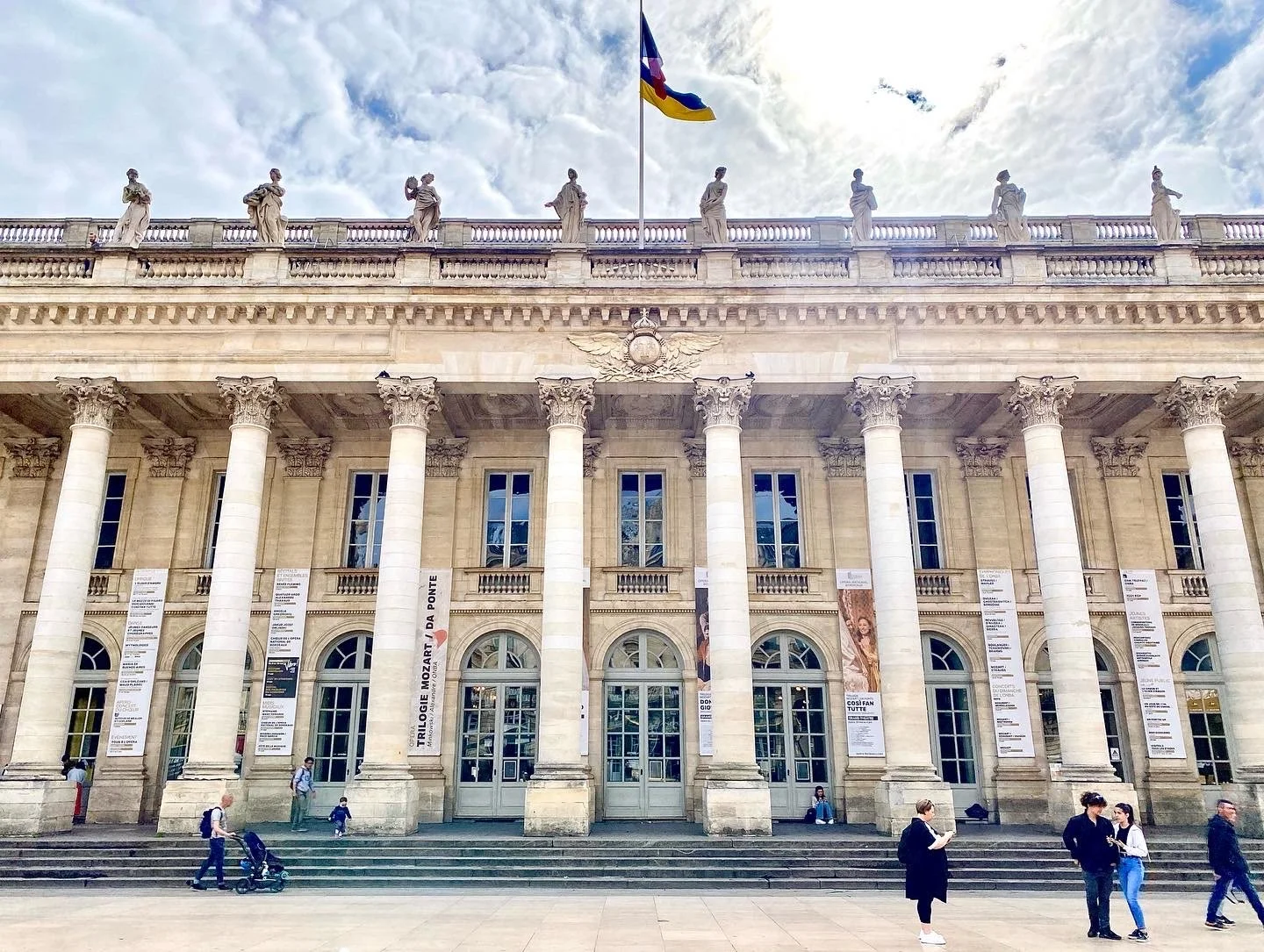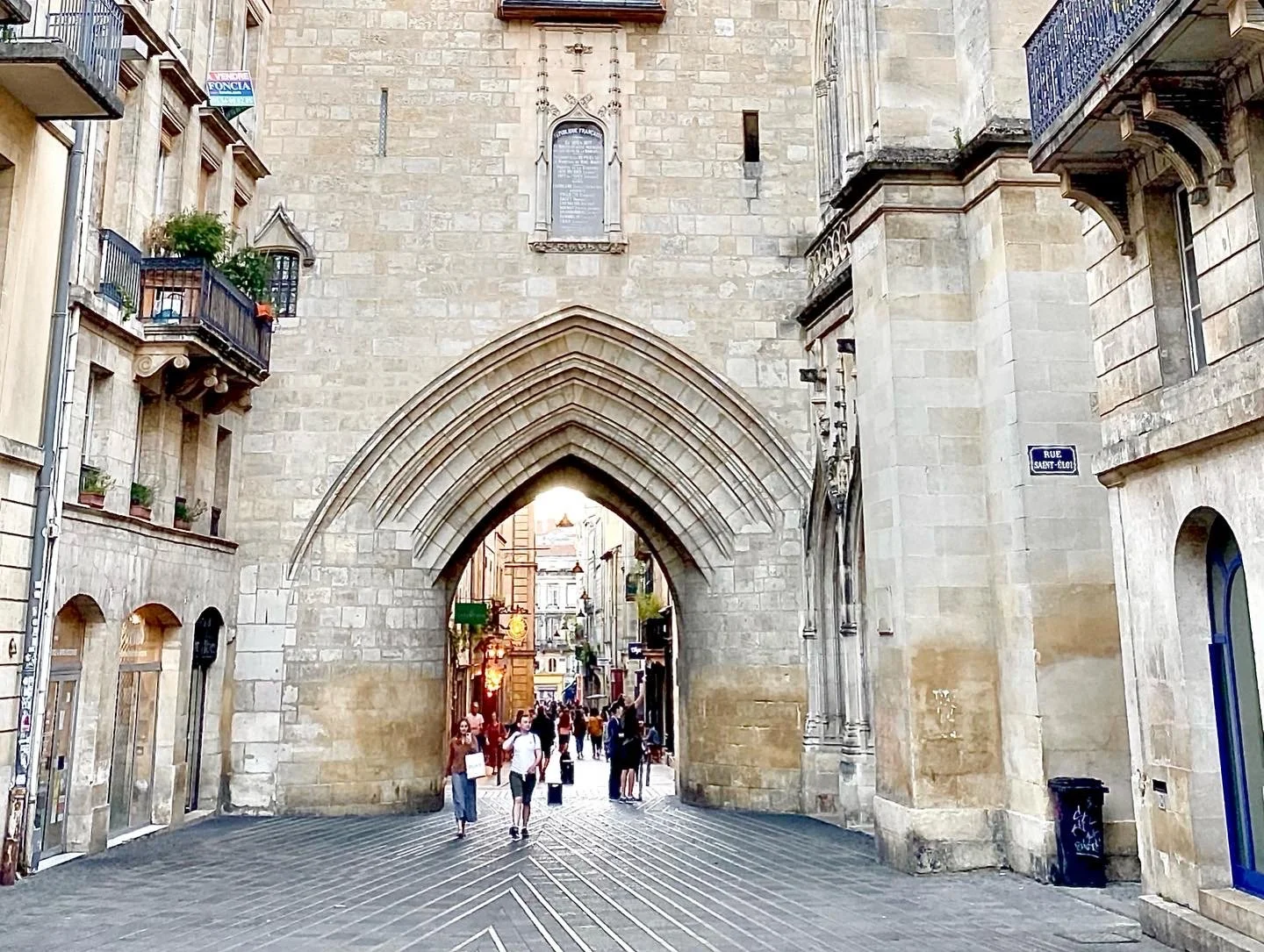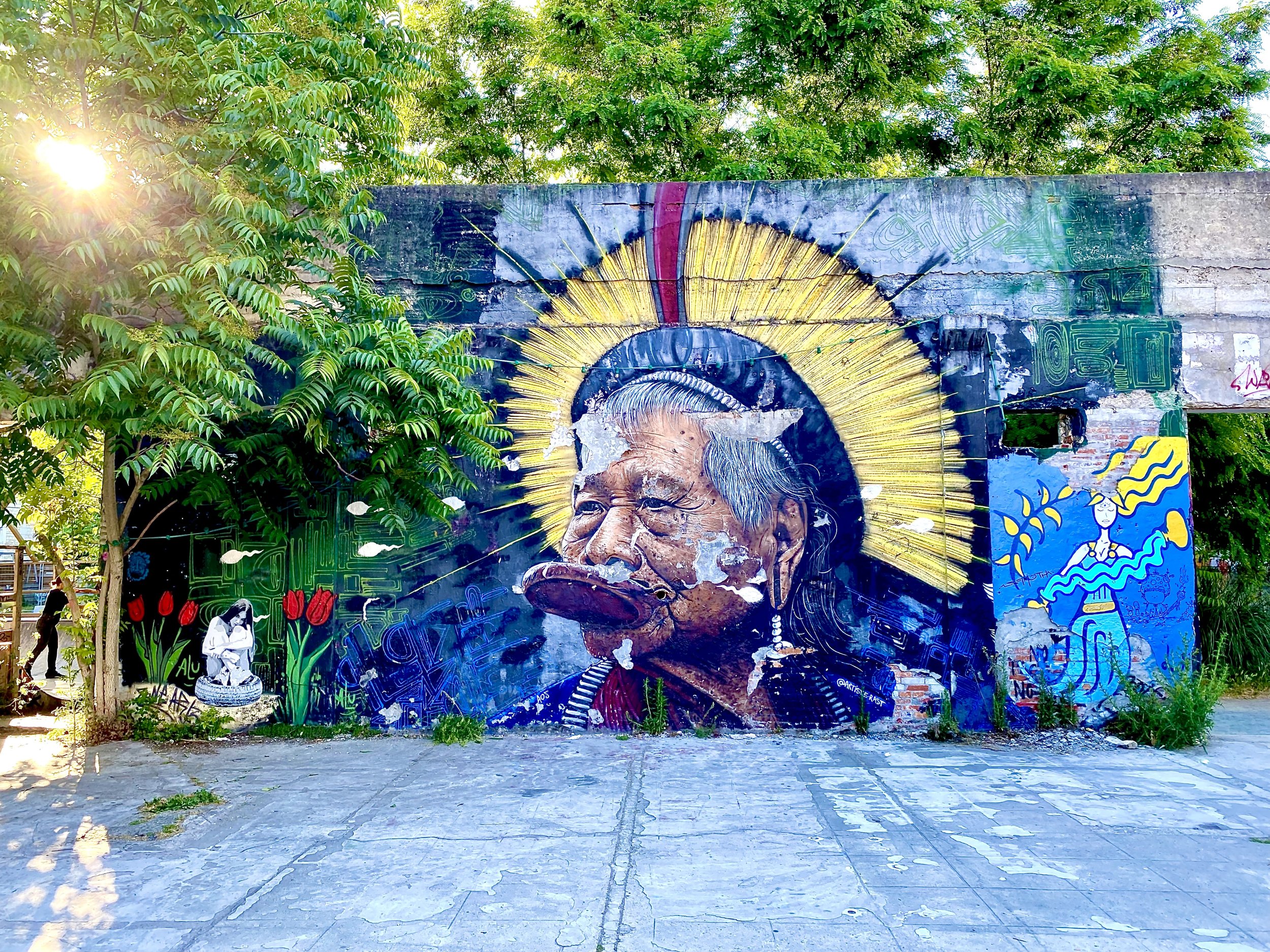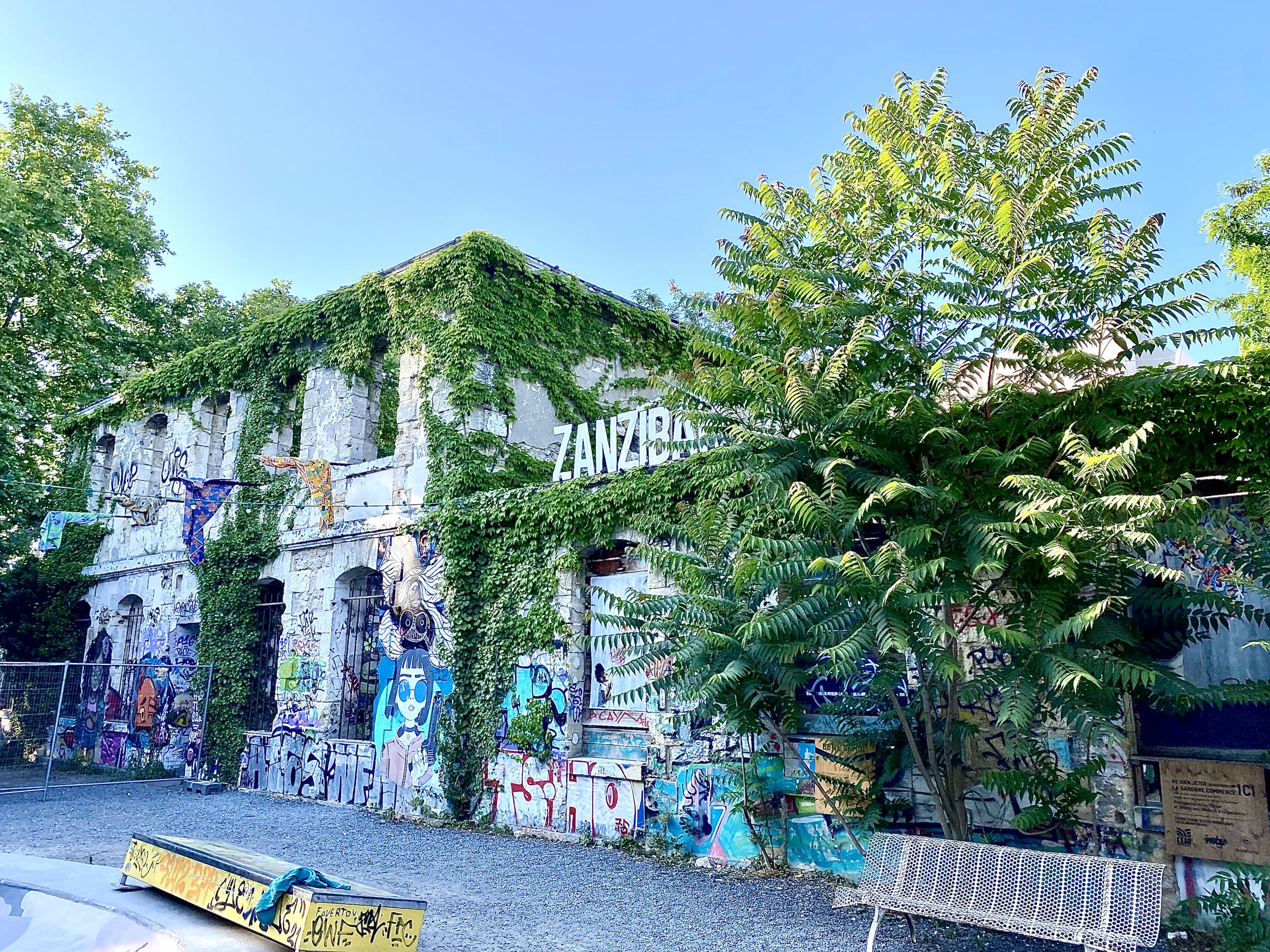Bordeaux Offers a Modern, Multicultural France
THE VIBRANT FRANCE YOU DIDN’T EVEN KNOW YOU DREAMED OF
I scheduled my trip to Bordeaux because one of my hostel dorm mates enjoyed his time there. I really didn’t know what to expect beyond an extensive wine history (which, for me, might be reason enough to go anyway). While there, I evolved from a bit bored with the city, to captivated, to thoroughly enthralled. It’s a place that grows on you - and reveals its magic in a slow drip.
For me, when I got there, I was a bit bored because the city is largely one-tone; the buildings are comprised of the same colored stones, and almost everything is a bit opulent. It has the common problem of - if everything is special, is anything? But once I adjusted to the overall character of the city, I began to see the differences from place to place, and to savor the beauty that was everywhere. It was the kind of architecture that The United States would make a facsimile of in an amusement park or Las Vegas.
When I became enthralled was when I started wandering around at night - and found the city to be vibrant, multicultural, and thoroughly modern. The streets really come alive after 7PM when restaurants open up for dinner and everyone is out and about. Your dining fare isn’t limited to French cuisine, and you can find most international cuisines (many with the same French dining experience).
I stayed in Bordeaux for three nights and I would’ve enjoyed a few more. The region is rich in day trips, and I didn’t even finish exploring the magic of the city itself. I know I’ll go back.
EXPLORE THE CITY’S STUNNING ARCHITECTURE
The whole city is beautiful but there are a few standout pieces that are good to visit while you wander around:
Opera National de Bordeaux (Grand Theater): A stunning piece of architecture in the city center.
Place de La Bourse: The city square with a reflective pool that is possibly the most common photo site shared out of Bordeaux.
Porte Cailhau: Formerly the main gate to the city, this structure looks like something Disney would mimic.
Grosse Cloche: An 18th century bell tower that - also looks like something Disney would mimic.
Bordeaux Cathedral: A Romanesque cathedral dating back to the 11th century. Remarkable from the outside, it is a bit dark / drab on the inside- though entry is free.
Palaus Gallien: The most well preserved piece of the old Roman city, this partial amphitheater stands out quite strongly against the backdrop of the more modern city, and reminds that most of what we see in the world is thoroughly new in the scheme of history.
It’s not a city where you need to go out of your way to find its most prominent buildings. As you wander around the city core, you’ll bump into truly wonderful pieces of architecture - and you can just look them up on Google Maps as you encounter them.
ALSO EXPLORE THE VIBRANCY OF PRESENT-DAY BORDEAUX
There were a few experiences that left me a bit enthralled with Bordeaux.
The first was walking around at night and seeing everyone out drinking and eating. The city core really comes alive at night.
The second was going to Hanger Darwin Skatepark. It’s an industrial space that’s been refitted with an indoor market, street art, and a wooden skate park. It just drips cool in an authentic, not trying too hard way.
The third was wandering around Marche does Capucins (and the entire area between Place de la Victoire and the Saint Jean Train Station). This area is extremely multicultural and vibrant - and just strongly reminded me that any romantic ideal we hold of culture is outdated (and likely was only ever a homogenized view of the majority population at the time of the snapshot).
I recommend wandering around aimlessly without agenda. It’s a city where you’ll just bump into cool markets, shops, and people.
OTHER THINGS TO DO
There is no shortage of things to do in and around Bordeaux, and it’s a place you could easily spend a week. Below are some of the most common tourist attractions.
Discover Bordeaux’s History at the Musee d’Aquitaine: This is one of the few museums I’ve visited on my trip. I went because I read it documented the prehistoric period of the region and because it had a cave sculpture from almost 30,000 years ago. It was really fascinating to learn about 30,000 years of history in the region, and also to learn about the Celtic empire. It gave an entire new lens to the scope of history I’m seeing on my trip and was very worth the 5 Euros.
Learn About Wine at Cite du Vin: The city has a very modern museum all about wine - from its history, to how to describe its profile, to how to make it, to how to pair it and serve it. Both the architecture and museum are thoroughly modern. There are about 10 hours of audio files in the guided tour, so you could easily spend all day there (though you will probably numb with information after a few). It is expensive (at 22 euros) - and if you’re on a budget I’m not sure it’s worth the price if you’ve taken a wine course before. Nonetheless, a very cool space and a great example of what an interactive museum can feel like.
Walk Along the Quais de Bordeaux: The city’s left riverbank is a really enjoyable walk, and there are lots of park spaces that you can just sit and relax along it.
Shop along Rue Sainte Catherine: The world’s largest pedestrian shopping street, Rue Sainte Catherine is distinctive. It is also crowded and very touristy - not a place I particularly enjoyed.
Relax at the Public Garden: When you want to escape the busyness of the city core, you can spend time in the quieter Public Garden, which is large enough to feel like you’ve left the city.
Check out Place does Quinconces: Generally, this is a fairly unremarkable gravel plaza near the river. However, it also hosts occassional markets and fairs, so it’s worth crossing through to see if anything is going on.
Explore the Region: Bordeaux is a great hub for day trips. I didn’t have time / energy to take one - but each of the spots my dorm mates went to they highly recommended. The most common are Saint-Emilion (a medieval town and UNESCO cultural site for wine-making), tours to the vineyard chateaus, and Dune du Pilat (Europe’s largest sand dune). A couple others are Libourne (another medieval town) and Citadelle de Blaze (a free architectural site).
This is an area where you definitely won’t get to everything, and will wear yourself out if you try. Pick the things that most appeal to you, and budget lots of time to relax and just explore.








